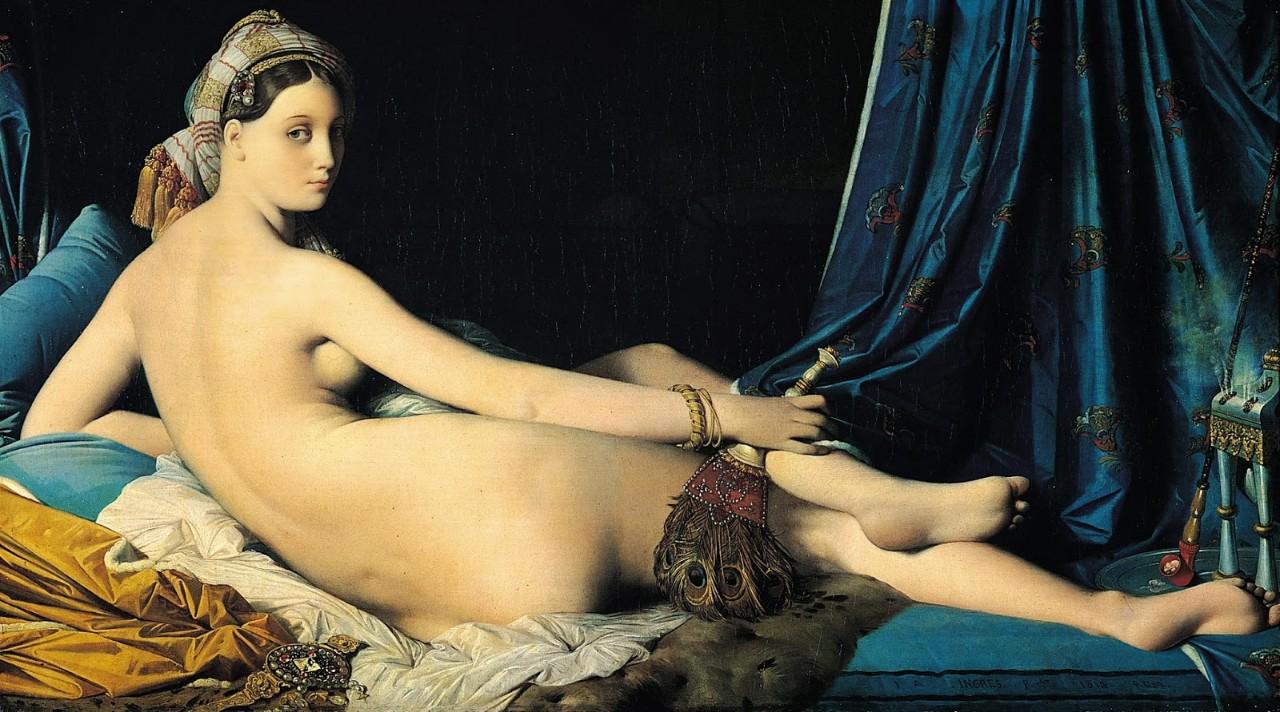The particularities of different works of art are predetermined by stylistic and historical factors, which depend on the period in art development. In this paper, two artworks representing the Neoclassical and Romantic periods are compared to detect similarities and differences in their stylistic features and how they were influenced by the cultural context. The compared works are Angelica Kauffman’s Cornelia Mother of the Gracchi, Pointing to Her Children as Her Treasures, and Jean-August-Dominique Ingres’ Grande Odalisque. It is argued that while stylistically, the two artworks share some similarities, the subject matter of the paintings is different, which is validated by the shifts in cultural contexts surrounding the painters.
Stylistically, one might detect several similar features between the two paintings presented in Figures 1 and 2. The shape and texture of brushstrokes are smooth and light, which gives both paintings a significant level of realistic depiction of the figures and environment. These characteristics are influenced by the previous historical periods in art; namely, neoclassicism was impacted by Renaissance, while Romanticism derived its brushstroke clarity from Neoclassicism.


As for the differences between the two paintings, one might note that the romantic painting by Ingres is marked by distortions of the woman’s figure. Indeed, the body appears elongated in order to emphasize the sensuality of the painting, which is a characteristic feature of romantic artworks in general (Ingres). On the contrary, the neoclassical painting by Kauffman does not contain any distortions due to the focus of the painter on the realistic depiction of all elements in the painting (Kauffman). In addition, while both paintings are balanced in terms of the compatibility of colorwork, the adherence to darker shades in the background in Ingres’ paintings suggests an emphasis on emotional appeal. Furthermore, the use of light and shadow to highlight shapes in odalisque’s figure is more evident in the work by Ingres rather than in work by Kauffman.
The choice of stylistic devices is validated by the impact of cultural context on the artists. Although both paintings were commissioned by monarchs, Kauffman’s artwork was used for recreational and educational purposes, while Ingres’ work was used to signify a shift in the style of art marked by the painter’s ideas. Moreover, since neoclassical art was inspired by Roman themes, the choice of Cornelia as a subject matter for the painting was logically validated (Kauffman). However, romantic painters were inspired by oriental themes, which validates the selection of an odalisque, who is a chambermaid, as a subject matter (Ingres). Thus, the cultural context was a decisive element in informing the partners’ decisions pertaining to the subject matter.
In summation, the comparison of the two artworks has revealed that the examples of neoclassical and romantic artworks are similar in the stylistic depiction emphasizing the clarity of objects and the accurate use of shapes. However, given the distinctions in cultural contexts and the impact of realistic features in neoclassicism and sensuality in romanticism, the paintings present different subject matters and adhere to the non-similar manner of conveying the meaning. Thus, the shift from Neoclassicism to Romanticism was marked by the integration of new emotionally colored principles of artwork and adherence to provoking subject matter.
Works Cited
Ingres, Jean-August-Dominique. Grande Odalisque. 1814. Louvre, Paris. Joy of Museums. Web.
Kauffman, Angelica. Cornelia, Mother of the Gracchi, Pointing to Her Children as Her Treasures. 1785. Virginia Museum of Fine Arts, Richmond. Web.